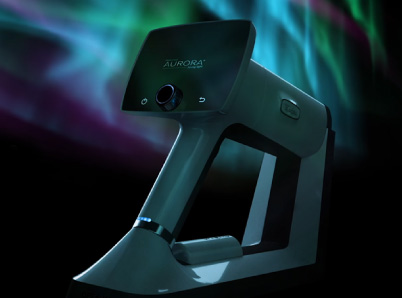Primary care physicians (PCPs) can play a vital role in preventing blindness caused by diabetic retinopathy (DR) via a diabetic retinopathy eye exam. But to do so at the level of primary care, physicians need the right tools.
DR continues to be the leading cause of blindness among working-age adults in the United States. The epidemiology of DR reveals alarming statistics:
- DR accounts for about 80% of cases of legal blindness in persons aged twenty to seventy-four in the United States.
- About 40% to 45% of all patients with diabetes in the United States have some form of DR.
- Almost all type 1 diabetes patients and 60% of type 2 diabetes patients will have DR after twenty years with the disease.
- Approximately 24% of patients with severe nonproliferative DR and 11% of those with moderate nonproliferative DR will go on to develop proliferative DR within three years.
- About 22.2% of all patients with DR develop proliferative DR within one year.
- In 2005, the prevalence of DR among US adults 40 years and older was 5.5 million. In 2010, the incidence of DR was estimated at 7.7 million. The number of cases of DR in the US is expected to rise to an estimated 16 million by 2050.
Progression of the disease can be rapid in gestational diabetes, and patients with DR may also develop diabetic macular edema. Data from NHANES indicates that about one-third of US patients with diabetes do not receive the appropriate ophthalmological care that could help avoid vision impairment and blindness. Contributing to the problem is the fact that patients with DR typically have no symptoms in the early stage of the disease and often do not seek a diabetic retinopathy eye exam until the disease advances and results in vision impairment.
Approximately 70-90% of cases of blindness from DR can be prevented with timely treatment. So, why don’t patients get timely eye exams?
- Patients don’t understand how to manage their diabetes.
- Patients don’t understand DR.
- Patients believe that declining vision is natural with aging.
- Insurance does not always cover DR screenings with specialists, or it limits screenings to once a year.
- Patients don’t like to have their eyes dilated.
- Patients don’t have transportation to ophthalmologist appointments.
- Patients don’t have time for ophthalmologist appointments.
- Patients need reminders to make ophthalmologist appointments.
- Locations for a diabetic retinopathy eye exam are limited.
The solution for timely DR detection is to make non-mydriatic AI-integrated mobile camera fundus imaging available where it is most likely to be accessed by diabetic patients: with their PCPs. That is what Optomed does for primary care.
PCPs are well aware of the limitations of traditional direct ophthalmoscopy in the detection of diabetic eye issues. They have to start six inches away from the patient to find the red reflex, and then, they move toward the patient, almost cheek to cheek, to complete the examination. Social distancing is impossible.
The examining care provider has to rotate the diopter lens until the optic nerve comes into focus. The nearsighted eye requires more minus/red number lenses. The farsighted eye requires more plus/green number lenses.
Then, the examining care provider must scan over and over up, down, left, and right to look at the vessels. The 5- to 8-degree field of view of the direct ophthalmoscope means that the physician must make 170 to 220 scans to detect a lesion twice the width of the optic disc.
When detection is made, the only way to record and communicate findings is through notes and sketches. Scaling the DR exam to reach more patients is impossible, and the direct ophthalmoscope does not give the examiner an efficient way of communicating findings.
More importantly, direct ophthalmoscopy lacks the sensitivity to be a useful tool in screenings for DR. In one recent study, ophthalmologists examining dilated eyes were only able to detect DR that had not yet become sight-threatening less than 40% of the time with direct ophthalmoscopy alone.
Different tools are needed. Optomed Aurora meets the modern standard of care.
The Optomed Aurora has a 50-degree field of view and a four-inch image for eye surface and retinal imaging. Images from the Optomed camera can be easily added to the EHR over an intranet or USB connection.
The Optomed Aurora is scalable to provide DR detection to all diabetic patients in the primary care practice. It is a mobile, handheld screening device. The portability of the Aurora means that it can be used at any office location or in mobile screenings.
Optomed Aurora frees primary care provider time and enhances patient flow by its ease of use. It is designed to also be used by non-specialists, support staff, and even volunteers. The inclusion of DR screenings in primary care exams can significantly enhance the revenue of the primary care practice.
Optomed Aurora is a great technology at an affordable price point. It is the technology that PCPs need for detecting diabetic retinopathy.
Here at Optomed, our mission is to help save the vision of millions of people. By integrating our software and artificial intelligence solutions with our camera, we enable eye screening for everyone, wherever they are. To see how we can equip you to save the sight of more patients, schedule a free consultation today!
